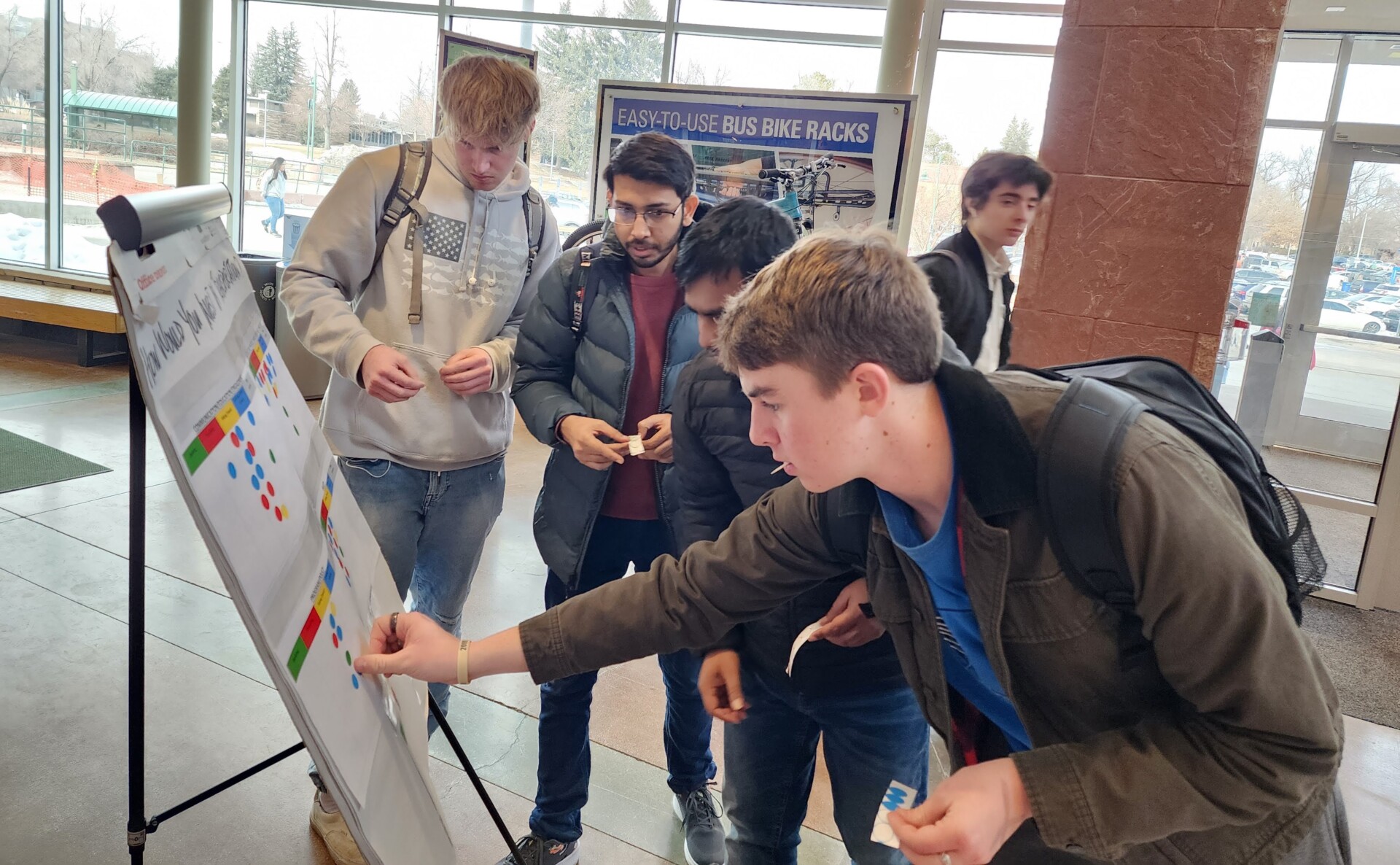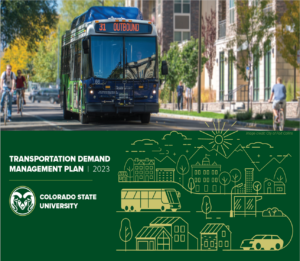
Students participate in transportation demand management activity in the Transfort office at the Lory Student Center. Photo by Jamie Gaskill
Story by Stephanie Zakis
Parking and Transportation Services has announced the completion of the Transportation Demand Management Master Plan update, which sets transportation goals for the next decade.
PTS contracted with consulting firm Kimley-Horn to develop a TDMP that is focused on optimizing transportation options for campus community members. The document outlines strategies by mode of travel for the next 10 years and has been submitted to the Master Plan Committee for consideration as it develops the university’s overall master plan to be completed in 2024.
 Extensive outreach
Extensive outreach
The plan is the culmination of a year-long coordinated effort among PTS, other CSU departments and city and regional stakeholders. PTS engaged with over 3,500 members of the CSU and Fort Collins community through pop-up events on campus, workshops and presentations to departments and student organizations, surveys and focus groups.
“Robust stakeholder engagement was an essential part of the process when developing the TDMP,” said Jamie Gaskill, associate director of active transportation with PTS. “We wanted to ensure that the needs of campus community members were at the center of the recommended strategies so that we are focusing future efforts on the things that will make the biggest impact for students, employees and visitors.”
About the goals
Recommendations made in the plan focus on improving convenience, quality and equity in the university transportation network. Goals set forth include investing in safe and reliable infrastructure, addressing transit frequency and reliability, and optimizing peak parking lot utilization. Additionally, the plan provides a framework to help CSU achieve a more balanced transportation mode split that will help the university meet climate action goals, improve safety and ensure the campus is accessible.
“PTS strives to learn from best practices of other universities and industry standards to best serve our community,” said Dave Bradford, executive director of PTS. “This plan will help us anticipate future challenges and opportunities as the university continues to grow.”
Copies of the executive summary and the full Transportation Demand Management Plan Update can be found online.